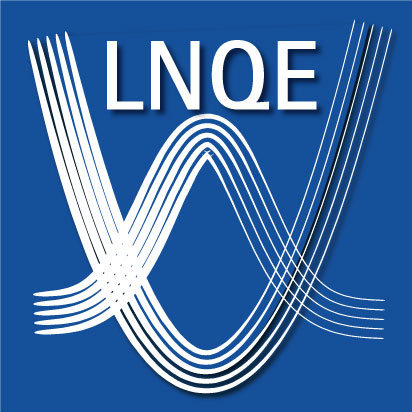Graphene-based sensors: the role of adsorbates probed by surface transport
| Leitung: | C. Tegenkamp, S. Sindelar, F. Renz |
| Team: | D. Slawig |
| Jahr: | 2016 |
Graphene’s unique properties, i.e. the extraordinary carrier mobility and capacitance, high electron transfer rate, exceptionally large surface-to-volume ratio in addition to its mechanical robustness and flexibility, makes it an attractive candidate for future sensor applications. The successful implementation of a graphene-based sensor technology requires a host material, which is low-priced in manufacture and sustainably fabricated from an almost inexhaustible source. Carbon nanofibres (CNFs), fabricated by electrospinning and subsequent processing and containing graphene as building-blocks, fulfil all of these requirements as recently demonstrated by us. Secondly, the tunability and tailoring of the sensor’s selectivity is the most crucial step. In this project the functionalization of graphene and CNFs with various adsorbates and relevant molecules is intended. The interdisciplinary collaboration with partners from chemistry and mechanical engineering covers all relevant aspects down to the atomic scale and has the potential to establish a new field of nanosensor research.
In detail, the adsorption of various elements (H, Au, Pb) on graphene and, in the course of the project, also on CNFs will be systematically studied by scanning tunnelling microscopy and spectroscopy under ultra-high vacuum conditions. The detailed information about the adsorption sites (substitutional, interstitial, intercalated) and the local electronic structure are important to quantify charge transfer processes and to interpret nanoscopic in-situ transport measurements performed by means of an unique 4-tip STM/SEM system. Moreover, these atomic anchors as well as intrinsic defects (vacancies, domain edges, etc.) shall be precisely analysed and explored for subsequent adsorption of test molecules (e.g. CO, NO2). Besides these chemical concepts of self-assembly, we intend to use also lithography in order to introduce defined adsorption sites for molecules and elucidate their potential of the selective molecular adsorption, a prerequisite for any type of gas sensor.
This project is closely entangled with the projects of Prof. Renz and Prof. Sindelar. Atomically well-defined and pre-decorated graphene structures are transferred for further wet-chemical functionalization with relevant molecules, e.g. biotin, coupled via different bonding schemes (dipole, covalent, dispersive). After the ex-situ characterization in their labs the samples are re-installed for in-situ transport experiments. This allows us to correlate the impact of selective bonding regimes with modifications of an electrical signal, i.e. transport properties. Similarly, these recipes will be applied to CNFs and the sensoric behaviour will be probed via transport measurements ranging from the nm-scale up to macroscopic distances, including ambient conditions.








